
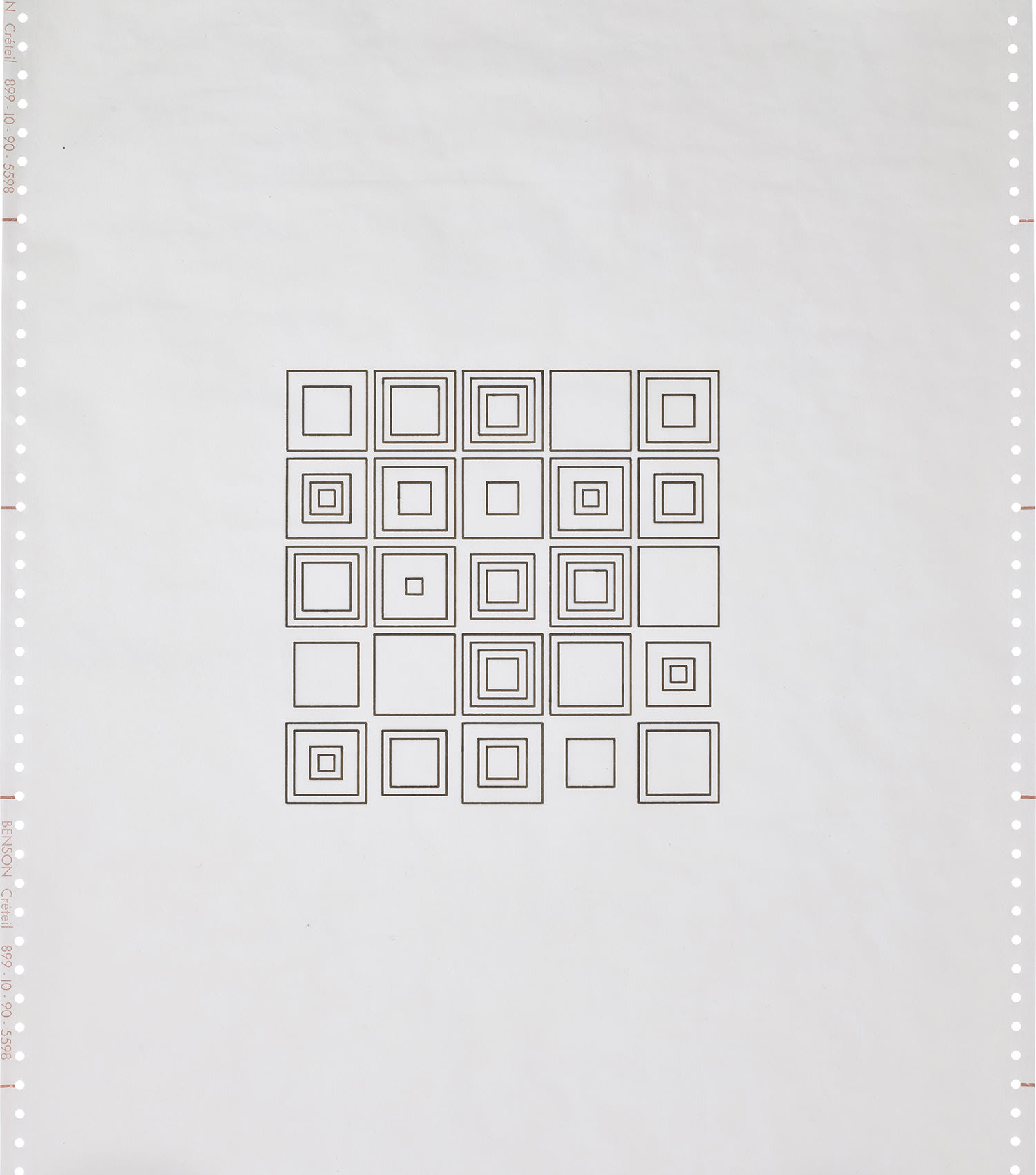
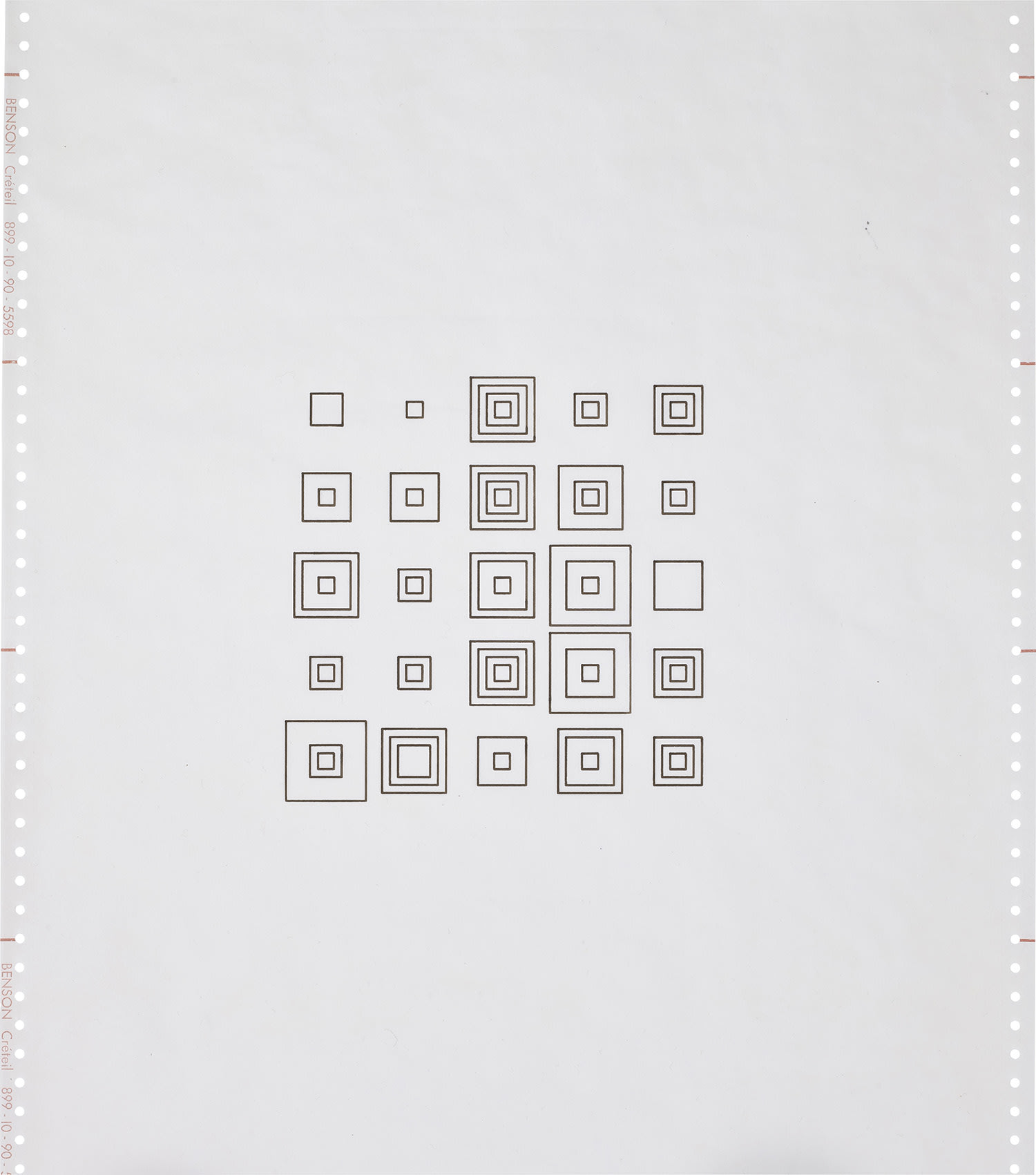




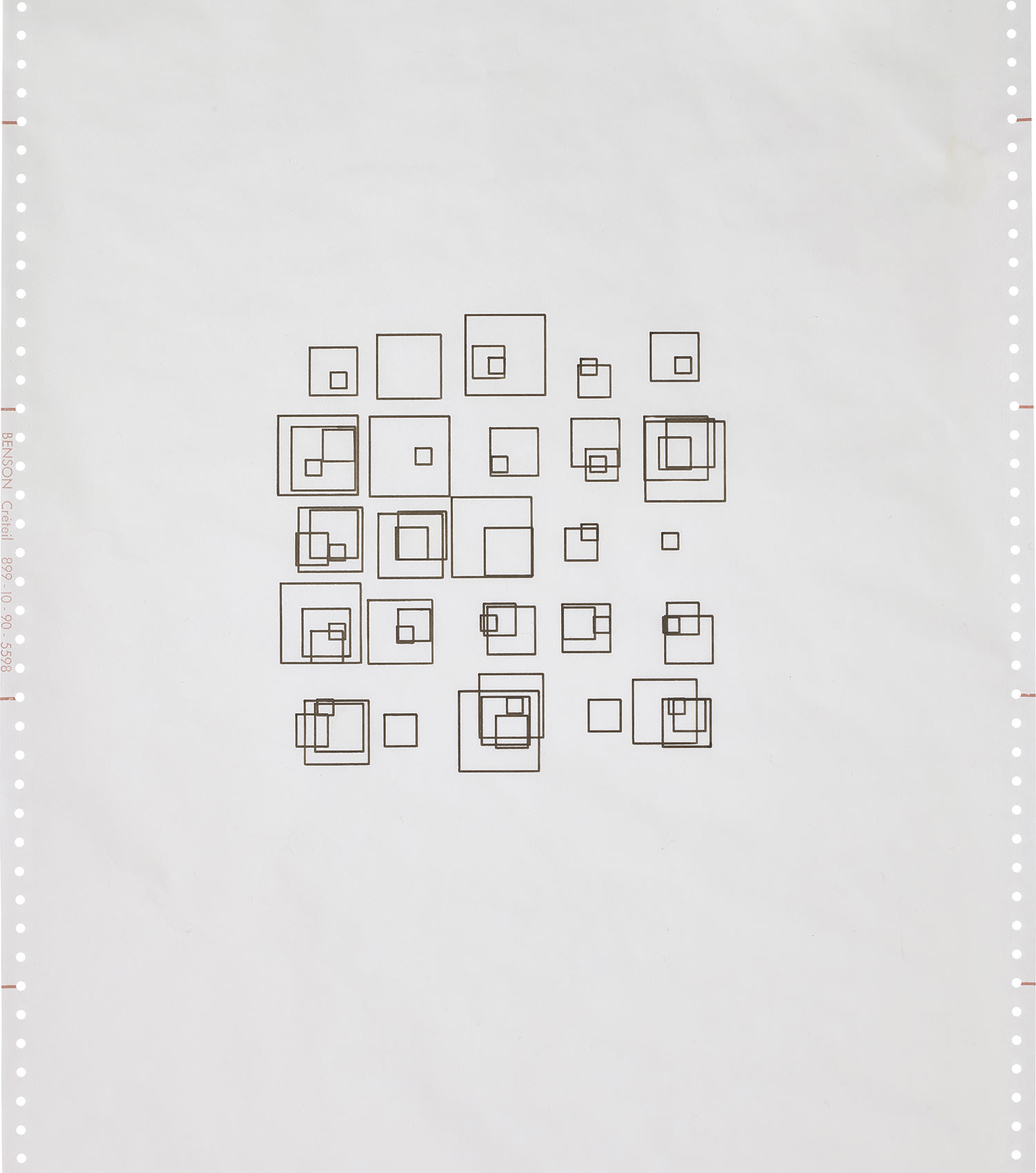
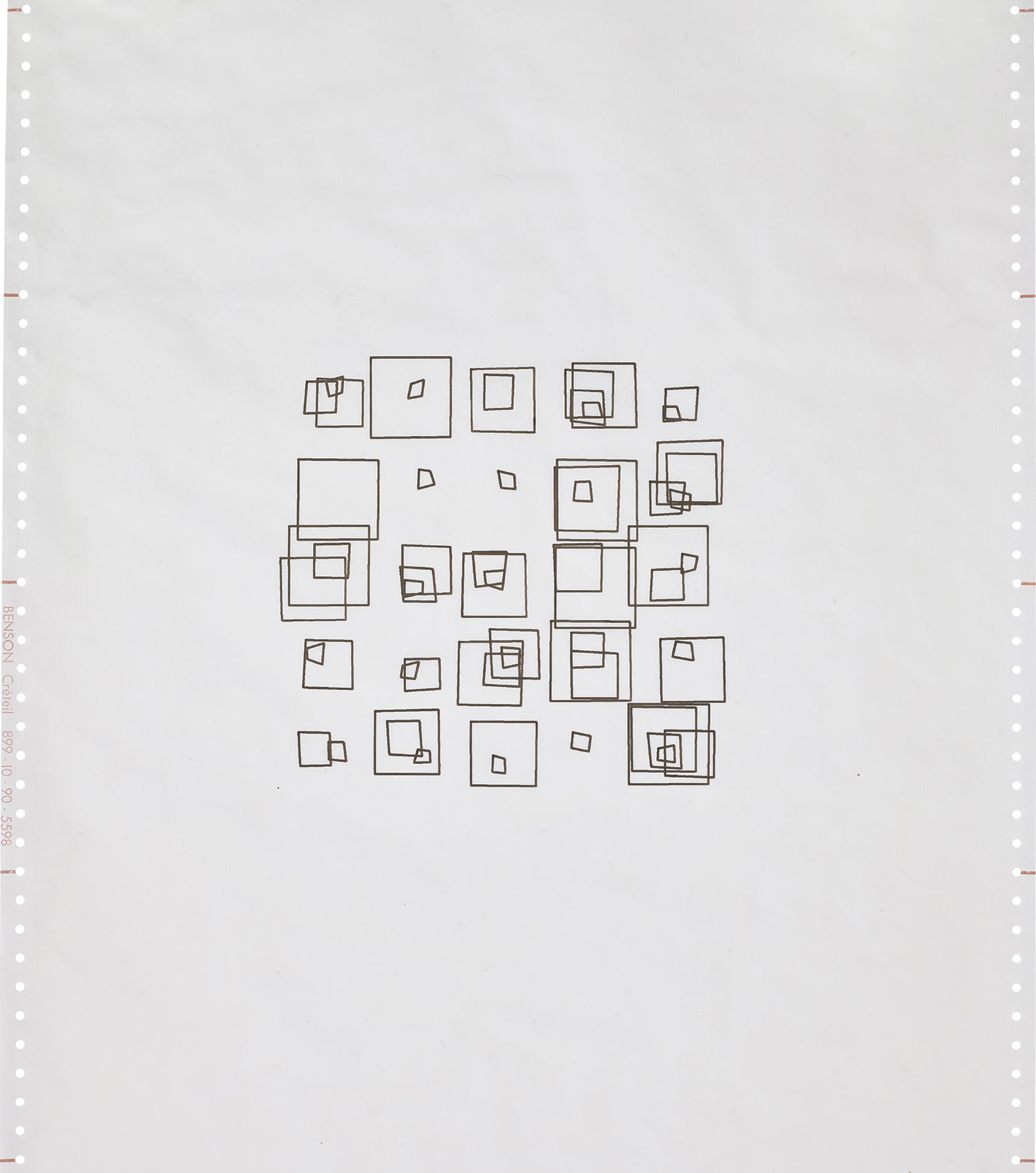
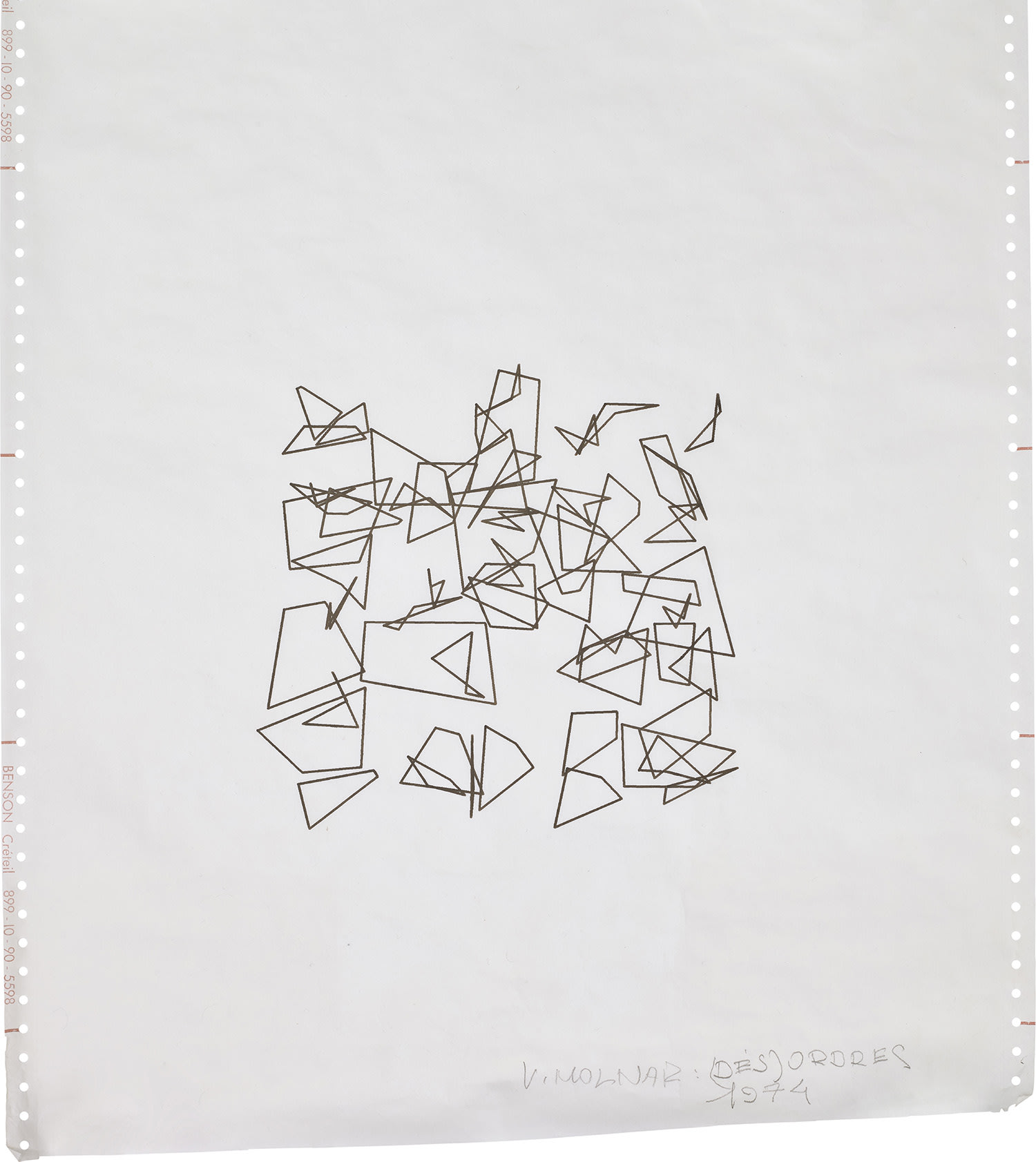












22
Vera Molnar
(Des)ordres
inscribed '9 DESSINS SUR 1 ROULEAU' upper left and signed, titled and dated 'V. MOLNAR (DES)ORDRES 1974' lower right
computer-generated graphic ink on Benson plotter paper
496 x 35.9 cm (195 1/4 x 14 1/8 in.)
Executed in 1974, this work is unique.